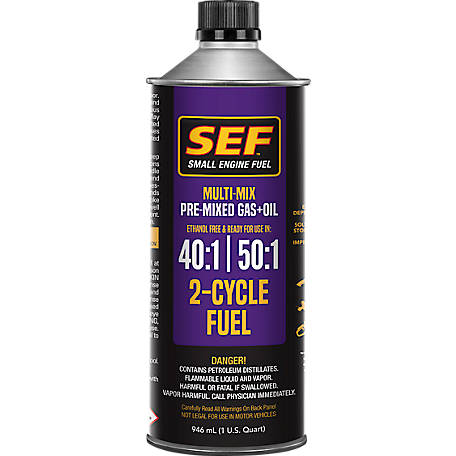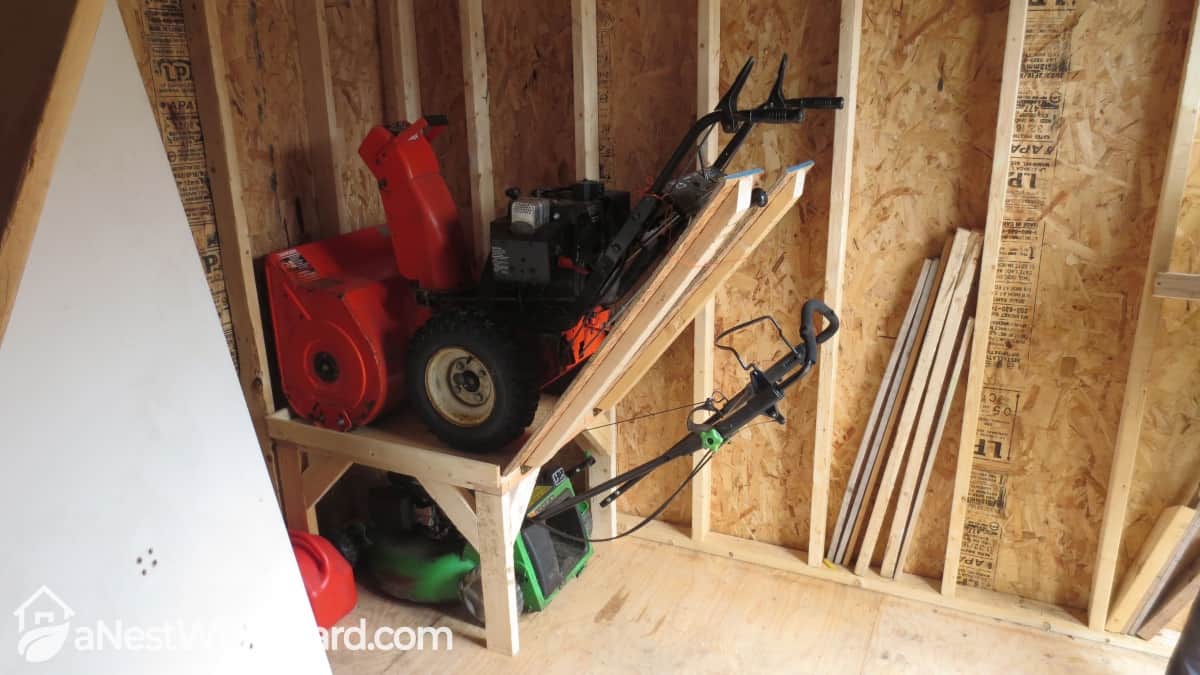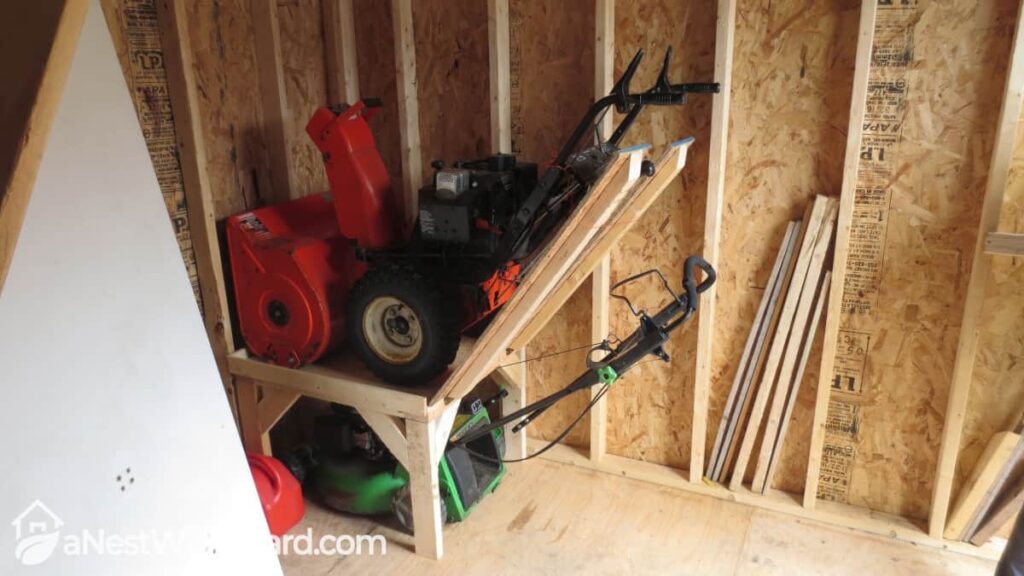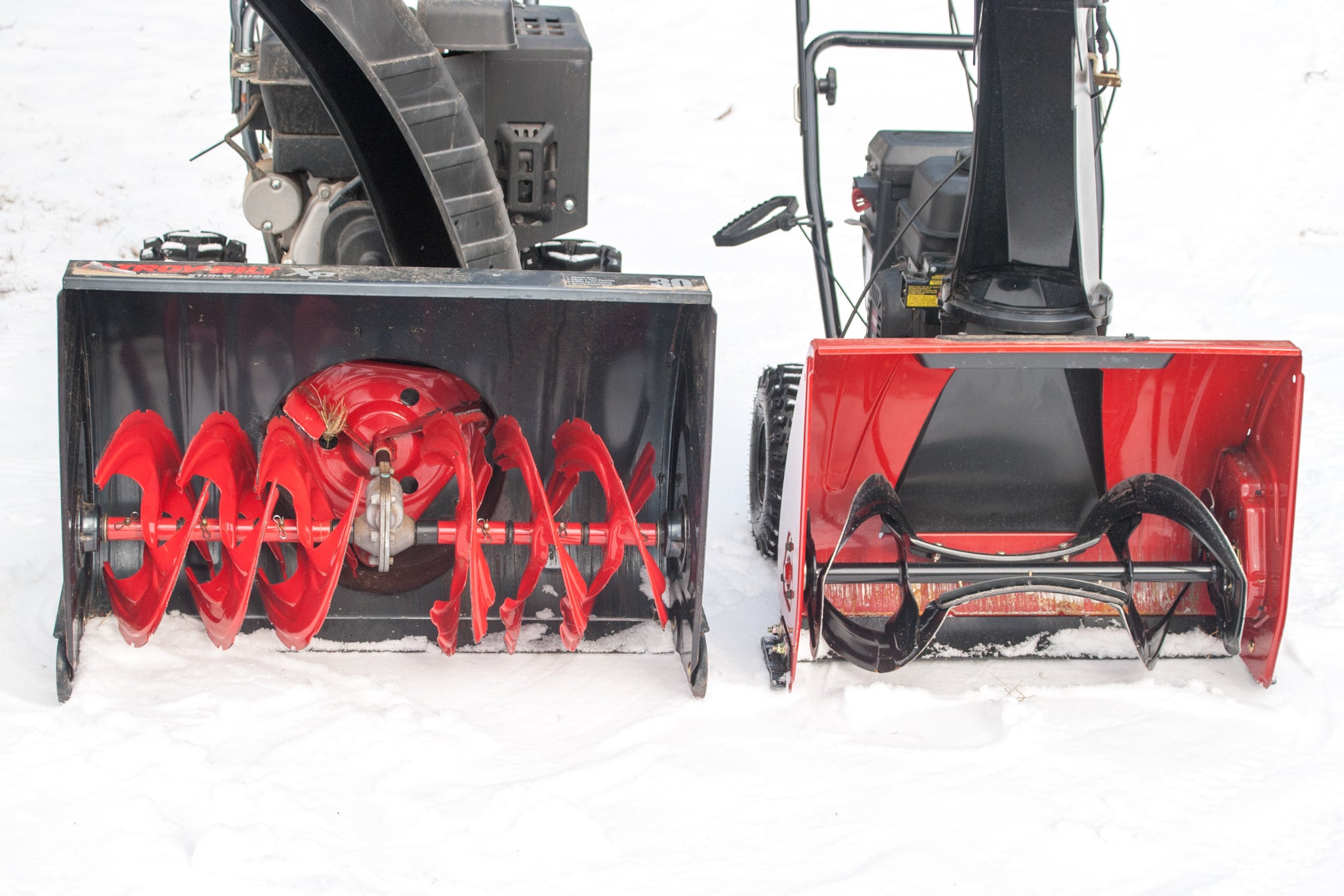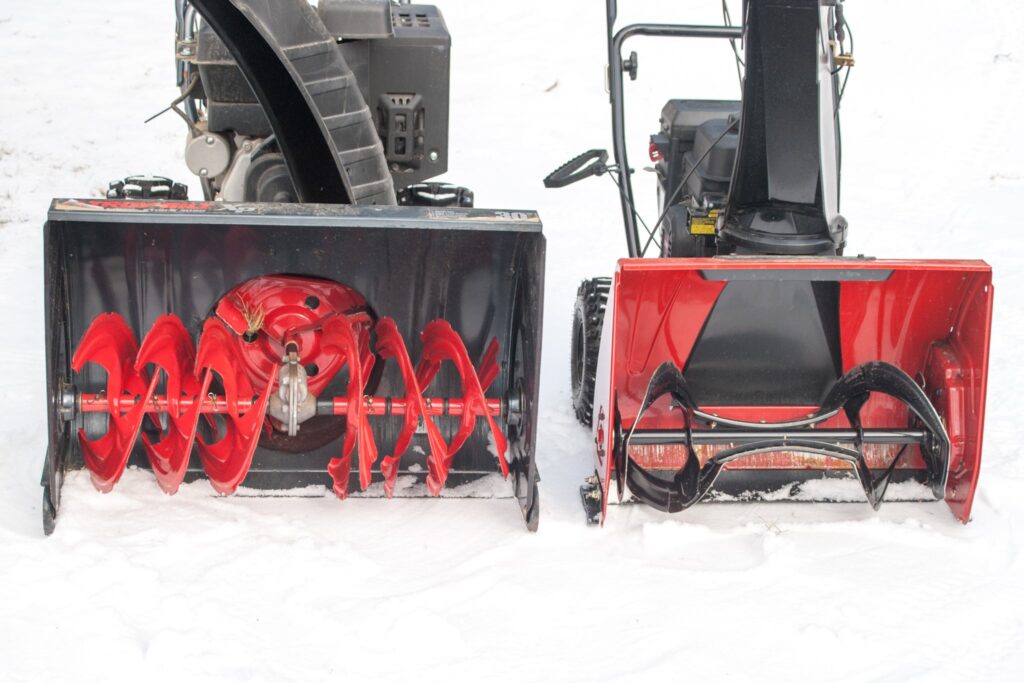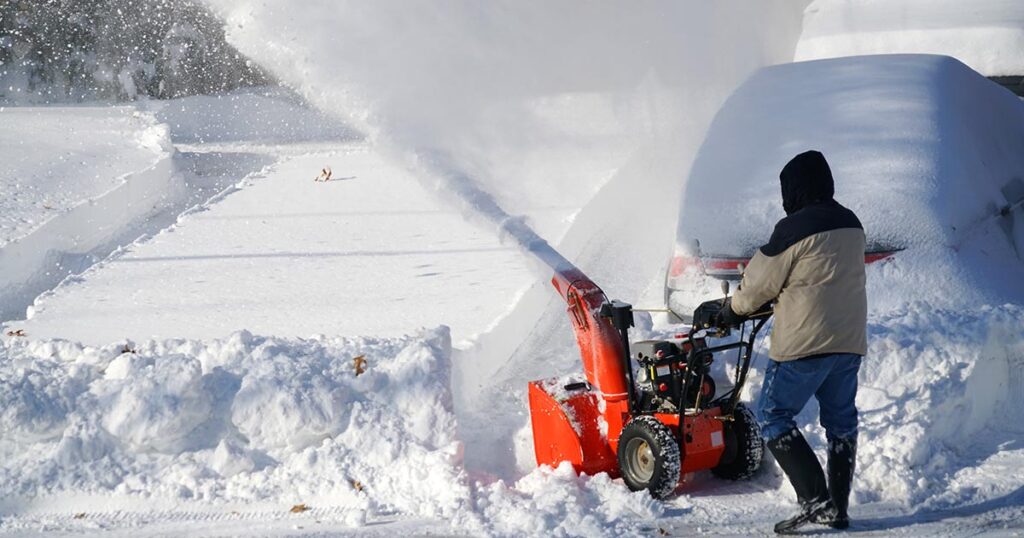Are you a first-time snowblower owner or just looking to learn more about the right fuel mix for your machine? Don’t worry, we’ve got you covered. In this article, we’ll dive into the debate of whether to use a 50:1 ratio or a 40:1 ratio for a snowblower. While there are differing opinions on the topic, we’ll explain the differences between the two ratios and provide you with some general guidance to help you make an informed decision. So, let’s get started and find out which fuel mix is best for your snowblower.
When it comes to the fuel mix for a snowblower, there are two common ratios that people debate about – 50:1 and 40:1. The ratio is a representation of the amount of oil to be mixed with a gallon of gasoline. The 50:1 ratio means that for every gallon of gasoline, you should mix in 2.6 ounces of oil, while the 40:1 ratio requires 3.2 ounces of oil for the same amount of gasoline.
Now, you might be wondering which ratio to use for your snowblower. The answer depends on the manufacturer’s recommendations. Some snowblower models explicitly state which ratio to use in the user manual. It’s crucial to follow these guidelines to ensure optimal performance and keep your machine running smoothly. However, if the manufacturer doesn’t provide any specific instructions, don’t worry – we’ll walk you through some general considerations and factors to help you make an informed decision that’s suitable for your snowblower.
So, don’t worry if you’re unsure whether to use a 50:1 or 40:1 ratio for your snowblower. We’ll guide you through the differences between the two, and together we’ll find the best fuel mix for your machine. Keep reading our article to gain a deeper understanding of this topic and make an informed decision.
What is a snowblower?
Definition and Purpose
A snowblower, also known as a snow thrower, is a powered machine used to remove snow from surfaces such as driveways, sidewalks, and roads. It is typically used in areas where snowfall is common during the winter season. Snowblowers come in different sizes and configurations, but they all work in a similar way by using an auger or impeller to scoop up and throw snow away.
The purpose of a snowblower is to make snow removal easier and more efficient compared to manual methods such as shoveling. By using a snowblower, you can quickly clear large amounts of snow without exerting too much physical effort. This can be especially helpful for individuals with limited mobility or those who need to clear snow from a large area.
Types of Snowblowers
There are several types of snowblowers available on the market, each with its own set of features and capabilities. The most common types include:
-
Single-stage snowblowers: These are lightweight and compact machines designed for clearing light to moderate snowfall. They have a single high-speed auger that both scoops up the snow and throws it away.
-
Two-stage snowblowers: These are larger and more powerful machines suitable for heavy snowfall and larger areas. They have an auger that scoops up the snow and a separate impeller that throws it away. Two-stage snowblowers can handle wet and compacted snow more effectively than single-stage models.
-
Three-stage snowblowers: These are the most powerful and heavy-duty snowblowers available. They have an additional accelerator that helps break up and remove tough ice and snow chunks. Three-stage snowblowers are best suited for regions with frequent heavy snowfall and icy conditions.
The type of snowblower you choose will depend on the amount of snowfall in your area, the size of the area you need to clear, and your personal preferences.
Fuel Mix Ratio for Snowblower
Importance of Fuel Mix Ratio
When it comes to operating a snowblower, the fuel mix ratio refers to the proportion of gasoline to oil that is required for the engine to run smoothly and efficiently. Using the correct fuel mix ratio is crucial to maintain the performance and longevity of your snowblower’s engine.
The fuel mix ratio is important because it ensures proper lubrication of the engine’s moving parts. Without sufficient lubrication, the engine can overheat and suffer from excessive wear and tear. Additionally, using an incorrect fuel mix ratio can lead to engine damage, starting difficulties, and reduced power output.
Difference between 50:1 and 40:1
The two most common fuel mix ratios for snowblowers are 50:1 and 40:1. The numbers represent the ratios of gasoline to oil, with the first number indicating the amount of gasoline and the second number indicating the amount of oil.
The difference between a 50:1 ratio and a 40:1 ratio lies in the amount of oil mixed with gasoline. In a 50:1 ratio, 50 parts of gasoline are mixed with 1 part of oil. In a 40:1 ratio, 40 parts of gasoline are mixed with 1 part of oil. Therefore, the 50:1 ratio requires less oil compared to the 40:1 ratio.
Choosing the Correct Ratio
When it comes to choosing the correct fuel mix ratio for your snowblower, it is important to refer to the manufacturer’s recommendations. The recommended ratio can usually be found in the snowblower’s user manual or on a label attached to the machine.
While most modern snowblowers are designed to run on a 50:1 ratio, some older models may require a 40:1 ratio. It is important to follow the manufacturer’s recommendations to ensure optimal performance and avoid potential damage to the engine.
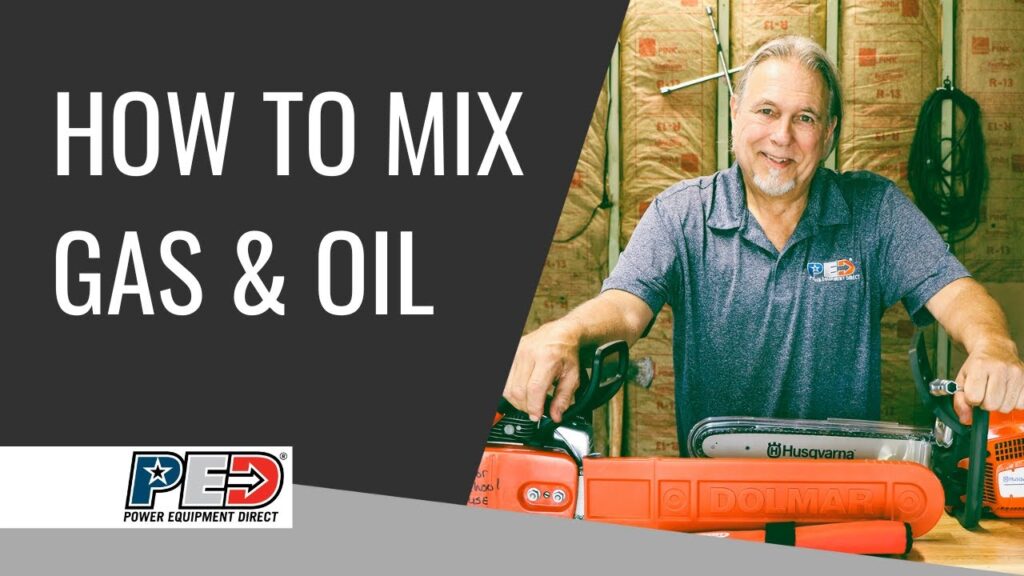
This image is property of i.ytimg.com.
Advantages and Disadvantages of 50:1 Ratio
Advantages of Using 50:1 Ratio
Using a 50:1 fuel mix ratio for your snowblower offers several advantages:
-
Convenience: The 50:1 ratio requires less oil to be mixed with gasoline, making it easier and more convenient to prepare the fuel mixture. You can simply add the recommended amount of oil to a gallon of gasoline, eliminating the need for measuring and mixing precise ratios.
-
Cost-effective: With the 50:1 ratio, you will need less oil for each gallon of gasoline, reducing the overall cost of fuel mixtures. This can be particularly beneficial if you frequently use your snowblower or have a large area to clear.
-
Reduced exhaust emissions: The 50:1 ratio is designed to provide efficient combustion and reduce exhaust emissions. This is an important consideration for individuals who are conscious about environmental impact and air pollution.
Disadvantages of Using 50:1 Ratio
However, there are also some potential disadvantages of using a 50:1 ratio:
-
Incompatibility with older models: Some older snowblower models may not be compatible with the 50:1 ratio and may require a 40:1 ratio instead. It is important to check the manufacturer’s recommendations to ensure the correct ratio for your specific snowblower.
-
Increased engine wear: While the 50:1 ratio is generally sufficient for most modern snowblowers, using a leaner oil mixture may result in increased wear and tear on the engine over time. This is especially true if the snowblower is operated under heavy load or extreme weather conditions.
Advantages and Disadvantages of 40:1 Ratio
Advantages of Using 40:1 Ratio
Using a 40:1 fuel mix ratio for your snowblower offers some advantages as well:
-
Compatibility with older models: If you own an older snowblower model, it may require a 40:1 ratio to ensure proper lubrication and performance. Using the recommended ratio for your specific model will help prevent engine damage and maintain optimal operation.
-
Increased oil lubrication: The higher oil content in the 40:1 ratio provides enhanced lubrication and protection to the engine’s moving parts. This can be beneficial, especially when operating in harsh winter conditions or for extended periods.
Disadvantages of Using 40:1 Ratio
However, there are also some potential disadvantages of using a 40:1 ratio:
-
More oil required: The 40:1 ratio requires a higher amount of oil to be mixed with the gasoline compared to the 50:1 ratio. This means you will need to purchase and store more oil for your snowblower, which can be an inconvenience or added expense.
-
Potential fouling: Using a richer oil mixture may lead to the buildup of carbon deposits inside the engine, resulting in fouled spark plugs and reduced performance. Regular maintenance, including cleaning or replacing spark plugs, can help mitigate this issue.
This image is property of media.tractorsupply.com.
Other Factors to Consider
Engine Specifications
In addition to the fuel mix ratio, it is important to consider the specific engine specifications of your snowblower. Different engines may have varying requirements for fuel mix ratios, oil types, and octane ratings of gasoline. Refer to the manufacturer’s recommendations for the most accurate and up-to-date information.
Environmental Impact
Another factor to consider when choosing a fuel mix ratio is the environmental impact. While both the 50:1 and 40:1 ratios are generally considered to be environmentally friendly, the 50:1 ratio may offer slightly lower emissions due to the leaner fuel mixture. However, modern snowblower engines are designed to meet strict emission standards, regardless of the fuel mix ratio used.
Manufacturer Recommendations
The best way to determine the correct fuel mix ratio for your snowblower is to consult the manufacturer’s recommendations. They have designed and tested the machine to operate optimally with a specific ratio, taking into account factors such as engine design, performance, and longevity.
Common Questions and Concerns
Can I Use a Different Ratio?
It is generally not recommended to use a different fuel mix ratio than what the manufacturer specifies for your snowblower. Using an incorrect ratio can lead to engine damage, starting difficulties, and reduced power output. Always refer to the manufacturer’s recommendations to ensure optimal performance and longevity of your snowblower.
Can I Use Pre-Mixed Oil?
Some manufacturers offer pre-mixed fuel options that contain the correct ratio of gasoline and oil. While these pre-mixed oils can be convenient, they are often more expensive than mixing your own fuel. Additionally, using pre-mixed oil may limit your choices in terms of oil brands and types. If you decide to use pre-mixed oil, make sure it is specifically designed for snowblower engines.
What Happens if I Use the Wrong Ratio?
Using the wrong fuel mix ratio can have several negative consequences. It can lead to engine damage, excessive wear and tear, starting difficulties, and reduced power output. Additionally, using an incorrect ratio may void your snowblower’s warranty. Always follow the manufacturer’s recommendations to ensure proper operation and avoid potential issues.

This image is property of images.thdstatic.com.
Tips for Proper Snowblower Maintenance
To ensure optimal performance and longevity of your snowblower, it is important to follow proper maintenance practices. Here are some tips:
Regular Cleaning and Inspection
After each use, clean your snowblower to remove any snow, ice, or debris that may have accumulated. Inspect the machine for any loose or damaged parts and repair or replace them as necessary. Regular cleaning and inspection will help prevent clogs, reduce wear and tear, and prolong the life of your snowblower.
Replacing Filters and Spark Plugs
Regularly check and replace the air filter and spark plug in accordance with the manufacturer’s recommendations. Clean or replace dirty or fouled spark plugs to maintain proper ignition and fuel combustion. Clogged or dirty air filters can restrict airflow and reduce engine performance.
Storing Properly in Off-Season
When the snowblower is not in use, it is important to store it properly. Drain any remaining fuel from the tank and run the engine until it is out of fuel to prevent fuel system clogs. Clean the machine thoroughly and store it in a dry and secure location. Consider covering the snowblower with a protective cover to prevent dust and debris accumulation.
Conclusion
Choosing the correct fuel mix ratio for your snowblower is essential for optimal performance and longevity. While the most common ratios are 50:1 and 40:1, it is important to follow the manufacturer’s recommendations for your specific model. Consider factors such as engine specifications, environmental impact, and fuel availability when making your decision.
By using the correct fuel mix ratio and following proper maintenance practices, you can ensure that your snowblower operates efficiently and effectively when you need it most. Regular cleaning, inspection, and replacing filters and spark plugs will help keep your snowblower in top shape and prolong its lifespan. Remember to consult the manufacturer’s recommendations and address any concerns or questions you may have to ensure a hassle-free snow removal experience.
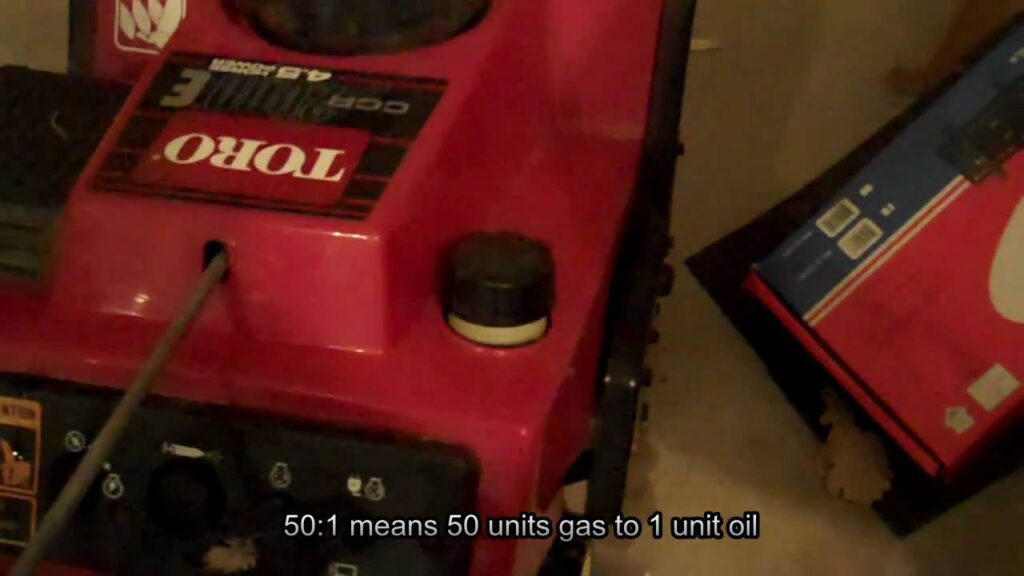
This image is property of i.ytimg.com.

